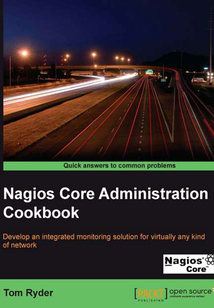舉報(bào) 

會(huì)員
Nagios Core Administrators Cookbook
最新章節(jié):
Index
ThisbookiswritteninCookbookstyle,beginningwithrecipesbasedonbasicstructurewhichgraduallyprogressestowardsusingNagiosCoreasamonitoringframework.ThisbookisforSystemAdministratorswhoarelookingforrecipestohelpthemdealwithadvancednetworkmonitoringissueswithNagiosCore.
最新章節(jié)
- Index
- Getting extra visualizations with NagVis
- Writing customized Nagios Core reports
- Reading status into a MySQL database with NDOUtils
- Tracking host and service states with Nagiosgraph
- Setting up an event handler script
品牌:中圖公司
上架時(shí)間:2021-08-05 17:49:00
出版社:Packt Publishing
本書(shū)數(shù)字版權(quán)由中圖公司提供,并由其授權(quán)上海閱文信息技術(shù)有限公司制作發(fā)行
作者還寫(xiě)過(guò)
同類熱門(mén)書(shū)


